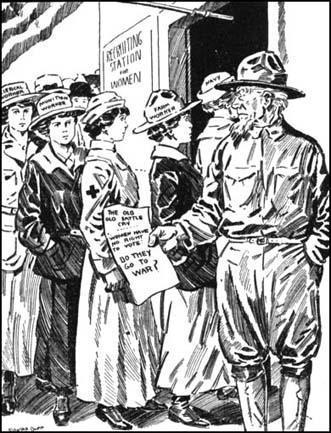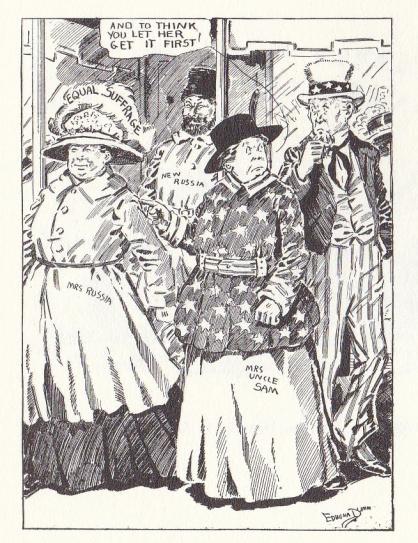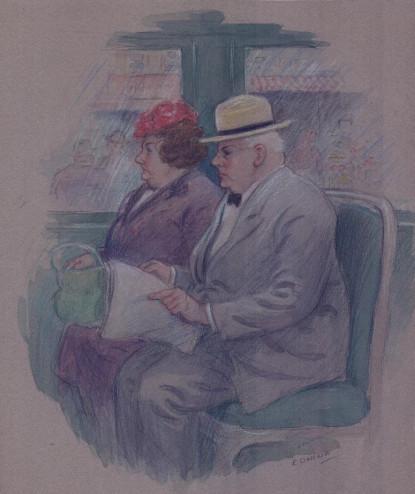Edwina Dumm was the first female to draw political cartoons regularly for a daily newspaper in America. She was born in 1893 in Ohio. Her father was an entertainer who got into the newspaper business. Edwina, fascinated by publishing and having a penchant for drawing, took a correspondence course in art and eventually landed a position with the Columbus Daily Monitor in Ohio. To be clear, Ms Dumm was not the first female to publish political cartoons in the United States, just the first one to publish cartoons on a daily basis for a newspaper. There are many examples of other women publishing political cartoons in journals, especially suffrage journals, before Dumm.
The Columbus Daily Monitor only ran from July 10, 1916 to July 5, 1917, but Dumm's contribution to the newspaper is its most enduring aspect. In the early 20 th century, women did not get many opportunities to express themselves politically, and a neophyte newspaper would be the ideal place for a woman to exploit for that purpose. She was talented and motivated, and in the culture of separate spheres, demanded less money than the men. What more could a newspaper want?
Shown below, "Lost Argument" is, perhaps Dumm's best known cartoon. In it she suggests that women should be recruited for World War I and that they have many of the necessary skills. However, true to the chivalry of the times and from the look of the commanding officer reviewing the recruits, it ain't gonna happen.

In her book, Cartooning for Suffrage, Alice Sheppard cites several examples of women's rights and suffrage cartoons by Dumm, including the one above. However, the following Dumm cartoon shows how scathing her criticism of the American suffrage imbalance could be. When Russia gave women the right to vote in 1917, she suggests that if a politically unstable country can grant the vote to women, surely an established country like the United States can as well.

Pulitzer Prize editorial cartoonist, Signe Wilkinson says of women political cartoonists in the early 20 th century, "After the suffrage campaign succeeded, these cartoons vanished from the printed page, leaving rare, brittle clippings and the 19 th Amendment as the only traces of their public lives."[1] And while that happened to most women cartoonists, Dumm's career ended because the Daily Monitor went out of business two years before the passage of the Susan B. Anthony Amendment.
Of political cartooning for a newspaper, Dumm said the only discrimination she experienced was that she was not invited to socialize with the other political cartoonists drawing for various newspapers in Columbus at the time. However, she did have to contend with at least one condescending tribute to her efforts. An article in a 1917 issue of the magazine Cartoons begins, "She is a 'regular' cartoonist and has her workshop in a real newspaper office amid the click of telegraph instruments and typewriters." When the Monitor went belly-up, no other newspaper in Columbus would hire her; however, she was able to land on her feet. She moved to New York City and achieved her more notable cartooning legacy. She created a cartoon strip called "Capp Stubbs and Tippie" (shown below) that was syndicated nationally.

She also worked on other comic strips and illustrated children's books until she retired in 1966. Her retirement included painting watercolors of people in the New York Subways (below).

[1] Chris Lamb, Drawn to Extremes: The Use and Abuse of Editorial Cartoons, New York: Columbia University Press, 2004. 92.
